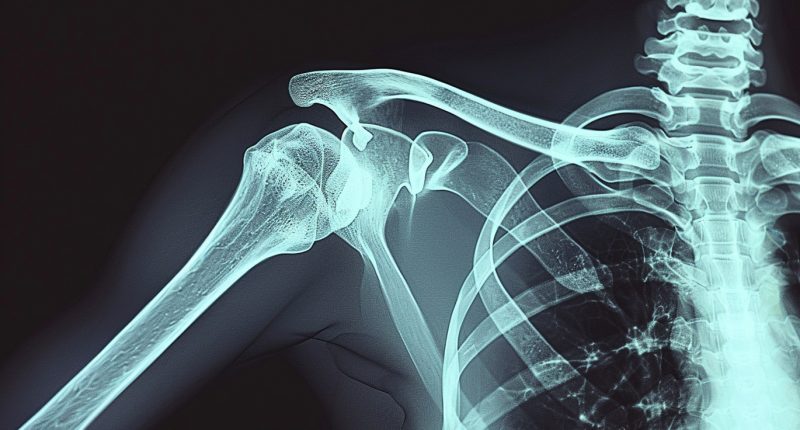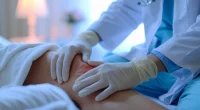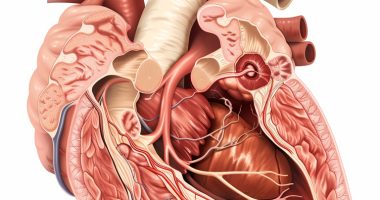Shoulder osteoarthritis
What is it?
Osteoarthritis of the shoulder joint is a lesion of the cartilage plate that covers the articular surfaces of the joint withsubsequent involvement of the underlying bone.
Disease
This disease affects not only the cartilage itself but also underlying bone. The pathological process gradually involves the nerves and ligamentous apparatus, the synovial, muscle-tendon compartment, as well as the subacromial region.
This condition is characterized by the following symptoms: chronic pain, reduced joint movement amplitude, and intra-articular cracking when rotating. Most often, people over 40 are subject to this condition.
The main symptoms of shoulder osteoarthritis are pain and limited arm mobility. To check the diagnosis, visualization methods of examination are informative: ultrasound and X-ray scans, computer and magnetic resonance imaging.
By clinical recommendations, treatment of the early stages of the disease is carried out by conservative methods. In later stages, arthroplasty is indicated when there is a significant damage to the cartilage layer and the patient’s self-care is impaired.
Types of shoulder osteoarthritis
According to the classification, the following types of shoulder osteoarthritis are distinguished:
- primary arthritis, in the development of which genetics plays an important role, and even the most thorough research does not allow to identify the most significant cause of the disease;
- secondary arthritis resulting from the action of adverse factors in the joint (injuries, endocrine diseases, impaired joint anatomy).
Doctors evaluate the rate of progression of the pathological process and the extent of the disease. The more aggressive the process, the faster the destruction of the articular cartilage and the involvement of the underlying bone occurs. From a morphological point of view, there are 6 degrees of arthritis:
- 1 – cartilage matrix becomes swollen, but the integrity of the surface area of the cartilage has not yet been breached;
- 2 – cartilage tissue cells located in the deep layers are affected, and the surface cartilage of the disc is damaged;
- 3 – vertical cracks in the cartilage plate;
- 4 – the area of the surface of the cartilage plate gradually peels away, erosive defects form and cystic cavities appear in underlying bone;
- 5 – at this stage, the underlying bone is exposed.
- 6 – the subchondral area is significantly thickened, cysts become more pronounced, and marginal bone growths appear.
Symptoms of shoulder osteoarthritis
The main clinical signs of shoulder osteoarthritis include pain, joint stiffness until complete loss of mobility, and joint deformity.
Distinctive features of pain in the form of osteoarthritis include:
- the appearance at the start of flexion, extension, or rotation.
- intensification during physical exertion;
- nocturnal nature due to the stagnation of venous blood in the intraosseous channels;
- presence of blockages – sudden jamming in the joint from falling between articular surfaces separated by bone and cartilage fragments;
- weather dependence – pain increases when the weather changes (in wet and cold climates, pain becomes more intense).
Osteoarthritis is a chronic disease. In the early stages of the disease, pain comes intermittent (at the time of exacerbation of the disease). The rate of pathological progression is determined by the timeliness of treatment initiation and the adequacy of lifestyle modification. Shoulder joint pain is chronic if it persists for six months or more. The change from acute to chronic pain indicates the progression of the pathologic process.
Causes of shoulder osteoarthritis
The causes of arthritis of shoulder joint are divided into two groups:
- modifiable – their correction is possible.
- unmodifiable – it is not possible to change them.
Unmodifiable factors that may increase the risk of developing osteoarthritic changes in the shoulder joint include:
- sex – women younger than 50 are less susceptible to the diseases than men; after 50, the prevalence of pathology among representatives of both sexes becomes about the same;
- age – the older the patient, the greater the risk (and around the age of 30, the process of degeneration of cartilage tissue proceeds faster than the regeneration process that creates the conditions for the development of the disease);
- congenital disorders of shoulder structure – excessively increased mobility (hypermobility), connective tissue dysplasia (usually the articular cartilage is represented by type 2 collagen fibers; in dysplasia, less strong types of collagen replace it), joint instability;
- genetic features – hereditary predomination of type 2 collagen, polymorphisms in the interleukin-1 and interleukin-2 genes.
Modifiable risk factors include:
- traumatic joint injury;
- excessive physical activity (strength sports and martial arts, such as barbell presses);
- obesity – for shoulder arthritis the essential factor is not the increase in mechanical load but the metabolic changesoccurring in the connective tissue, including the state of chronic inflammation associated with obesity.
- weakness of the shoulder brace, especially those people who perform precise operations with their hands (jewelry, dentists, secretaries, writers);
- vitamin D deficiency that is actively involved in maintaining the health of the musculoskeletal system;
- a diet with a low concentration of vitamin C, which is an important link in the calcium-phosphorus metabolism of the body;
- hormonal imbalances – thyroid diseases, diabetes, etc.
- smoking, both active and passive.
In osteoarthritis of the shoulder, the main targets of the pathological process are articular cartilage, subchondral bone, and synovial membrane. Affected cartilage synthesis and proteoglycans are reduced, fragmentation and cracking of the disc are observed, revealing the underlying bone. Increasing non-physiological stress on the bone leads to its compaction and the appearance of cysts and osteophytes (marginal growths).
Diagnostics
Examination of the patient for pain in the shoulder joint should begin with an X-ray. It is important to perform scans with multiple projections to examine the joint in detail. Images can be taken in direct projection, with internal and external rotation positions. Soft tissue ultrasound scanning of the joint is the most informative method for evaluating soft tissue configurations of the joint, especially in the early stages of arthritis. If the diagnosis remains unclear, an MRI/CT scan of the joint is recommended. In the next stage, it will assess the safety of joint function.
Treatment
In the early stages of the pathological process, treatment of the shoulder osteoarthritis is performed by conservative methods, and with severe degeneration of the articular cartilage, surgical intervention (endoprosthetics) is indicated.
Conservative treatment
During an exacerbation of the process, the first priority is pain relief. Non-steroidal anti-inflammatory drugs are most often used for analgesic purposes. They can be applied topically (in creams and ointments), injected into the joint cavity, or applied systemically (tablets, injections into the muscle). For some patients, the pain may be so severe that a short course of corticosteroid medication can relieve it.
Intra-articular administration of hyaluronic acid or plasma, including platelet-rich ones, can stimulate the cartilage plate and promote its regeneration (such treatment is considered pathogenetic). These injections help to accelerate the production of collagen and elastin fibers that form the foundation of cartilage. As a result, the structure of the cartilage layer and synovial membrane improves, which helps to increase the congruence of articular surfaces. These intra-articular injections help optimize the production of synovial fluid, which not only cushions shocks and moisturizes cartilage but also improves metabolism in chondrocytes, increasing their intrinsic potential.
After the acute process subsides, physiotherapy methods of rehabilitation (pulse flows, ultrasound, and laser therapy) can be used as part of a holistic treatment. These procedures have a complex positive effect on the joint structures.
Surgical treatment
- Arthroscopy: For mild cases, to clean out the joint.
- Shoulder Arthroplasty: Total or partial shoulder replacement for severe cases.
- Osteotomy: Bone realignment surgery, less common for shoulder OA.
- Total shoulder replacement. This operation is indicated for significant destruction of a cartilage disc that is accompanied by persistent pain and impaired joint function, leading to an inability to self-serve and perform occupational tasks.
All of these surgical procedures are performed in more than 900 hospitals all over the world. (https://doctor.global/results/diseases/shoulder-osteoarthritis). For example, you can undergo this procedure in 25 clinics in India with an average treatment cost of $9.5 K. (https://doctor.global/results/asia/india/all-cities/all-specializations/procedures/total-shoulder-replacement)
Prevention of shoulder osteoarthritis
The primary prevention of arthritis aims to maintain optimal metabolism in the bone-cartilage compartment. To do this, we recommend:
- maintain a normal weight.
- adequately compensate for hormonal imbalances in the body (consultation and dynamic monitoring by an endocrinologist is required);
- dosed to strengthen the muscles of the corset shoulder region;
- perform regular warm-up exercises if your professional activities involve performing similar shoulder movements.
To prevent the progression of advanced osteoarthritis of the shoulder, the following recommendations are essential:
- avoid lifting heavy weights, such as lifting a barbell.
- carry out recurrent courses of therapeutic massage;
- regularly engage in health-improving gymnastics (under the supervision of a physiotherapy specialist).
Rehabilitation services
After the surgery cast plaster is applied, providing the necessary degree of immobilization. After the removal of the cast, a period of restoration of functional activity of the joint begins. To do this, we recommend therapeutic massage courses, physiotherapy, and remedial exercises under the supervision of a physiotherapy specialist.


